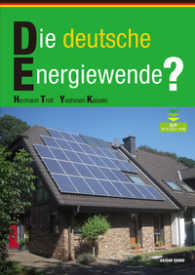Full Description
Terminology has started to explore unbeaten paths since Wüster, and has nowadays grown into a multi-facetted science, which seems to have reached adulthood, thanks to integrating multiple contributions not only from different linguistic schools, including computer, corpus, variational, socio-cognitive and socio-communicative linguistics, and frame-based semantics, but also from engineering and formal language developers. In this ever changing and diverse context, Terminology offers a wide range of opportunities ranging from standardized and prescriptive to prototype and user-based approaches. At this point of its road map, Terminology can nowadays claim to offer user-based and user-oriented, hence user-friendly, approaches to terminological phenomena, when searching, extracting and analysing relevant terminology in online corpora, when building term bases that contribute to efficient communication among domain experts in languages for special purposes, or even when proposing terms and definitions formed on the basis of a generally agreed consensus in international standard bodies.
Terminology is now ready to advance further, thanks to the integration of meaning description taking into account dynamic natural language phenomena, and of consensus-based terminology management in order to help experts communicate in their domain-specific languages. In this Handbook of Terminology (HoT), the symbiosis of Terminology with Linguistics allows a mature and multi-dimensional reflection on terminological phenomena, which will eventually generate future applications which have not been tested yet in natural language.
The HoT aims at disseminating knowledge about terminology (management) and at providing easy access to a large range of topics, traditions, best practices, and methods to a broad audience: students, researchers, professionals and lecturers in Terminology, scholars and experts from other disciplines (among which linguistics, life sciences, metrology, chemistry, law studies, machine engineering, and actually any expert domain). In addition, the HoT addresses any of those with a professional or personal interest in (multilingual) terminology, translation, interpreting, localization, editing, etc., such as communication specialists, translators, scientists, editors, public servants, brand managers, engineers, (intercultural) organization specialists, and experts in any field.
Moreover, the HoT offers added value, in that it is the first handbook with this scope in Terminology which has both a print edition (also available as a PDF e-book) and an online version. For access to the Handbook of Terminology Online, please visit https://benjamins.com/online/hot/ .
The HoT is linked to the Handbook of Translation Studies, not in the least because of its interdisciplinary approaches, but also because of the inevitable intertwining between translation and terminology.
All chapters are written by specialists in the different subfields and are peer-reviewed.
Contents
1. Introduction (by Kockaert, Hendrik J.); 2. Foreword (by Geeraerts, Dirk); 3. PART I. Fundamentals for term base development; 4. Terms and specialized vocabulary: Taming the prototypes (by Hacken, Pius ten); 5. Frames as a framework for terminology (by Faber, Pamela); 6. How to build terminology science? (by Depecker, Loic); 7. Terminology and lexicography (by Kageura, Kyo); 8. Intensional definitions (by Lockinger, Georg); 9. Enumerations count: Extensional and partitive definitions (by Nilsson, Henrik); 10. Associative relations and instrumentality in causality (by Sambre, Paul); 11. Ontological definition (by Roche, Christophe); 12. Domain specificity: Semasiological and onomasiological knowledge representation (by Santos, Claudia); 13. Getting to the core of a terminological project (by Dobrina, Claudia); 14. PART II. Methods and technology; 15. Automatic Term Extraction (by Heylen, Kris); 16. Terminology tools (by Steurs, Frieda); 17. Concept modeling vs. data modeling in practice (by Madsen, Bodil Nistrup); 18. Machine translation, translation memory and terminology management (by Reynolds, Peter); 19. PART III. Management and quality assurance (QA); 20. Terminology work and crowdsourcing: Coming to terms with the crowd (by Karsch, Barbara Inge); 21. Terminology and translation (by Bowker, Lynne); 22. Managing terminology projects: Concepts, tools and methods (by Cerrella Bauer, Silvia); 23. Terminology management within a translation quality assurance process (by Popiolek, Monika); 24. Managing terminology in commercial environments (by Warburton, Kara); 25. TBX: A terminology exchange format for the translation and localization industry (by Melby, Alan K.); 26. PART IV. Case studies; 27. Using frame semantics to build a bilingual lexical resource on legal terminology (by Pimentel, Janine); 28. Terminology and localization (by Schmitz, Klaus-Dirk); 29. PART V. Language and terminology: Planning and policy; 30. Language policy and terminology in South Africa (by Antia, Bassey E.); 31. Language policies and terminology policies in Canada (by Chan, Nelida); 32. PART VI. Terminology and interculturality; 33. The social and organizational context of terminology work: Purpose, environment and stakeholders (by Drame, Anja); 34. Index







